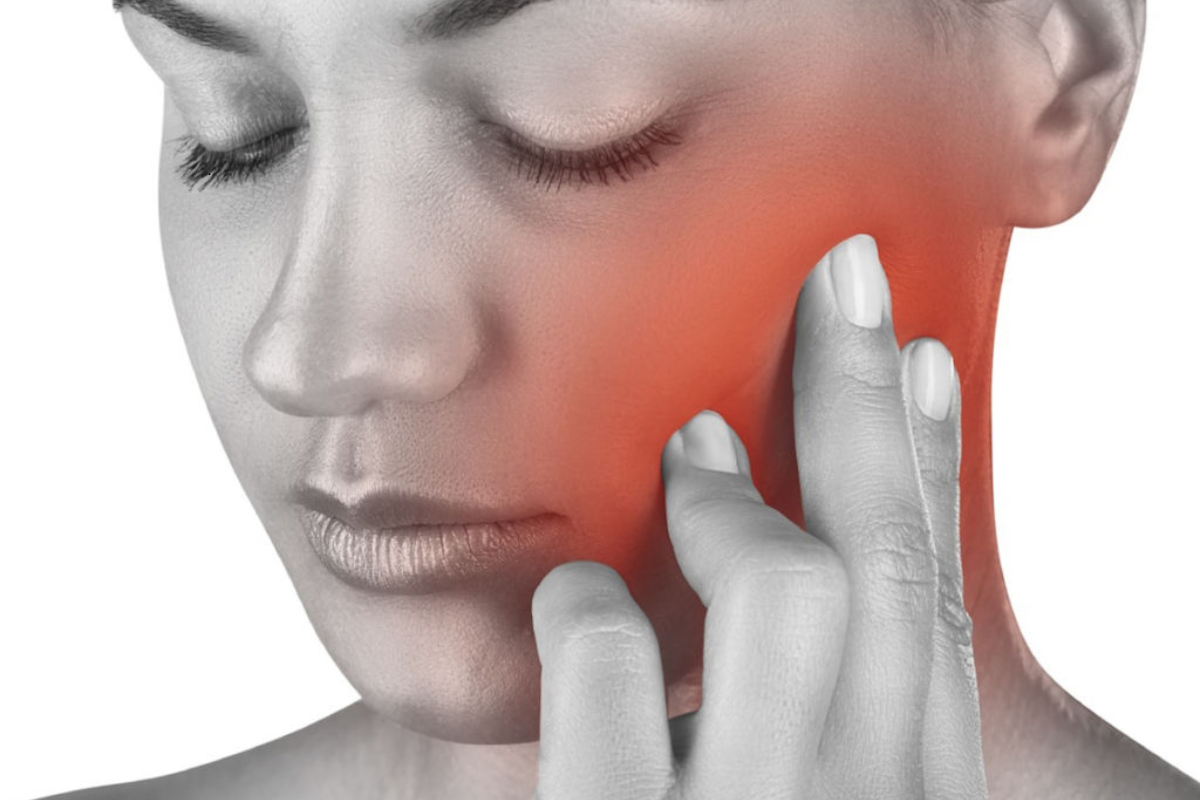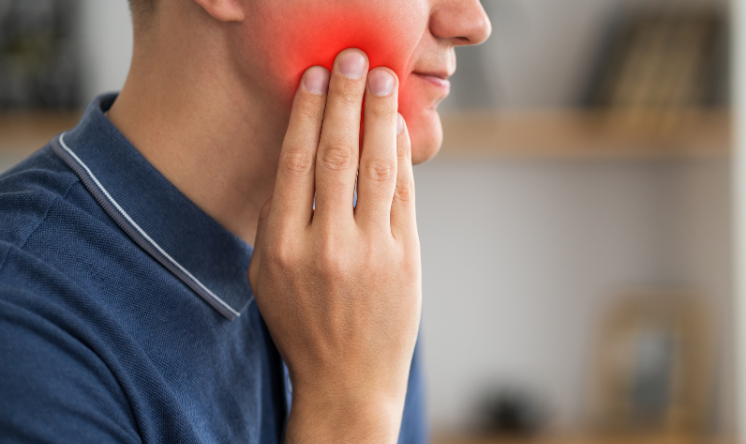San Jose, CA
What is The Difference Between TMJ And TMD?


When you hear the terms TMJ and TMD, it’s easy to assume they’re the same thing. However, these abbreviations represent different aspects of a common issue that affects millions of people worldwide. TMJ refers to the temporomandibular joint—the hinge that allows your jaw to move. On the other hand, TMD stands for temporomandibular disorders, a group of conditions that cause pain and dysfunction in this critical joint. Understanding the difference between TMJ and TMD is key to getting the right treatment and finding relief from symptoms. Curious to learn more? Dive into this blog to uncover everything you need to know.
Understanding the Temporomandibular Joint (TMJ)
The temporomandibular joint (TMJ) is one of the most complex joints in the human body. It connects the lower jaw (mandible) to the temporal bone of the skull, situated in front of each ear. This joint enables various jaw movements such as chewing, talking, and yawning. The TMJ is composed of muscles, ligaments, discs, and bones that work together to ensure smooth and coordinated movement.
Components of the TMJ
The TMJ comprises several key components that function together. These include:
- Mandibular Condyles: The rounded ends of the lower jawbone that fit into the joint.
- Articular Disc: A fibrocartilaginous structure that acts as a cushion between the condyle and the temporal bone.
- Ligaments: Connective tissues that stabilize the joint.
- Muscles: Various muscles, including the masseter, temporalis, and pterygoid muscles, facilitate jaw movement.
Function of the TMJ
The TMJ’s primary function is to allow the mouth to open and close and enable lateral (side-to-side) movements. This functionality is essential for everyday activities such as speaking, eating, and facial expressions. When the TMJ functions properly, these movements are smooth and pain-free. However, any dysfunction in the TMJ can lead to discomfort and various symptoms.
What are Temporomandibular Disorders (TMD)?
Temporomandibular disorders (TMD) encompass a group of conditions that cause pain and dysfunction in the TMJ and the muscles controlling jaw movement. TMD can result from various factors, including injury, arthritis, genetics, or habitual behaviors like teeth grinding or clenching. Unlike TMJ, which refers to the joint itself, TMD represents a broader category of disorders affecting the joint and associated structures.
Symptoms of TMD
TMD symptoms can vary widely among individuals, making diagnosis challenging. Common symptoms include:
- Jaw Pain: Persistent or intermittent pain in the jaw joint and surrounding muscles.
- Difficulty Chewing: Discomfort or pain while chewing food.
- Limited Jaw Movement: Restricted ability to open or close the mouth.
- Lockjaw: A sensation of the jaw getting stuck in an open or closed position.
- Ear Pain: Earaches or a sensation of fullness in the ears.
- Headaches: Chronic headaches or migraines, often related to jaw tension.
- Clicking or Popping: Sounds during jaw movement, such as clicking, popping, or grating noises.
Causes of TMD
The exact cause of TMD is often difficult to pinpoint, but several factors can contribute to its development:
- Injury: Trauma to the jaw or head can damage the TMJ and surrounding structures.
- Arthritis: Osteoarthritis or rheumatoid arthritis can affect the TMJ.
- Genetics: A family history of TMD or related conditions may increase the risk.
- Bruxism: Habitual teeth grinding or clenching, often due to stress or anxiety.
- Dental Issues: Misaligned teeth or bite problems can strain the TMJ.
- Hormonal Factors: Hormonal changes, particularly in women, may influence TMD risk.
Diagnosing TMD
Diagnosing TMD involves a comprehensive evaluation by a healthcare professional. The process typically includes:
- Medical History: Detailed patient history, including symptoms and potential contributing factors.
- Physical Examination: Examination of the jaw, neck, and head for signs of tenderness, pain, or dysfunction.
- Imaging Studies: X-rays, MRI, or CT scans to visualize the TMJ and surrounding structures.
- Dental Examination: Assessment of bite alignment and dental health.
Treatment Options for TMD
Treatment for TMD varies based on the severity and underlying cause of the disorder. Common treatment options include:
- Medications: Pain relievers, anti-inflammatory drugs, or muscle relaxants to alleviate symptoms.
- Physical Therapy: Exercises and techniques to strengthen jaw muscles and improve mobility.
- Dental Appliances: Mouthguards or splints to prevent teeth grinding and reduce jaw strain.
- Lifestyle Modifications: Stress management, dietary changes, and avoiding habits that exacerbate TMD.
- Surgery: In severe cases, surgical intervention may be necessary to repair or replace damaged TMJ structures.
Lifestyle Changes for Managing TMD
In addition to medical treatments, certain lifestyle changes can help manage TMD symptoms and prevent flare-ups:
- Stress Management: Techniques such as meditation, yoga, or deep breathing exercises can reduce stress and muscle tension.
- Dietary Adjustments: Eating soft foods and avoiding chewy or hard foods can minimize jaw strain.
- Posture Improvement: Maintaining good posture can reduce neck and jaw tension.
- Jaw Exercises: Gentle jaw stretching and relaxation exercises can improve jaw mobility.
- Avoiding Overuse: Limiting activities that overuse the jaw, such as excessive talking or chewing gum.
The Importance of Early Diagnosis
Early diagnosis and treatment of TMD are crucial to prevent the progression of symptoms and complications. Left untreated, TMD can lead to chronic pain, severe jaw dysfunction, and a reduced quality of life. If you experience any symptoms of TMD, it is essential to seek professional evaluation and care promptly.
How TMJ and TMD Differ
While TMJ refers specifically to the temporomandibular joint, TMD encompasses a range of disorders affecting this joint and related structures. TMJ is a part of the body, while TMD is a condition or set of conditions causing dysfunction and pain in the TMJ. Understanding this distinction is vital for accurate communication and effective treatment.
Seeking Professional Help
If you suspect you have TMD, consult a dentalcare provider experienced in diagnosing and treating TMJ disorders. A comprehensive evaluation will help determine the best course of action to manage your symptoms and improve your quality of life.
Preventative Measures for TMJ and TMD
Preventing TMJ and TMD involves adopting habits that support jaw health and minimize risk factors:
- Regular Dental Check-Ups: Routine dental visits can identify and address potential issues before they develop into more severe problems.
- Stress Reduction: Incorporating stress-reduction techniques into your daily routine can help prevent habits like teeth grinding.
- Jaw-Friendly Diet: Choosing foods that are easy on the jaw can prevent overuse and strain.
- Good Posture: Maintaining proper posture, especially while working or using electronic devices, can reduce jaw and neck tension.
- Awareness of Jaw Habits: Being mindful of behaviors such as clenching or chewing on non-food items can prevent unnecessary strain on the TMJ.
Long-Term Management of TMD
Managing TMD often requires a long-term approach, combining medical treatment with lifestyle changes. Patients should work closely with their dentalcare providers to develop a comprehensive management plan that addresses their specific needs and symptoms. Regular follow-ups and adjustments to the treatment plan may be necessary to achieve the best outcomes.
Advances in TMD Treatment
Recent advancements in TMD treatment offer new hope for patients struggling with this condition. Innovations such as minimally invasive surgical techniques, advanced imaging technologies, and personalized treatment plans are improving the effectiveness of TMD management. Patients should stay informed about new treatment options and discuss them with their healthcare providers.
Support and Resources for TMD Patients
Living with TMD can be challenging, but support and resources are available to help patients cope with their condition. Support groups, educational materials, and professional organizations can provide valuable information and emotional support. Connecting with others who understand the challenges of TMD can be a source of comfort and encouragement.
Final Thoughts on TMJ and TMD
Understanding the difference between TMJ and TMD is essential for accurate diagnosis and effective treatment. While the TMJ is a critical component of jaw function, TMD represents a broader spectrum of disorders that can significantly impact quality of life. Early intervention, comprehensive treatment, and lifestyle modifications are key to managing TMD and achieving long-term relief.
For those seeking professional help, consulting a qualified healthcare provider is the first step toward effective management of TMJ and TMD. Whether you’re experiencing mild discomfort or severe symptoms, timely diagnosis and treatment can make a significant difference in your overall well-being.
In the final consideration, it’s important to note that personalized care and a holistic approach to treatment can lead to successful management of TMD. Patients should remain proactive in their care, seeking the best possible treatments and making necessary lifestyle changes to support their jaw health. For individuals in need of specialized care, exploring options like TMJ treatment San Jose can be beneficial.



